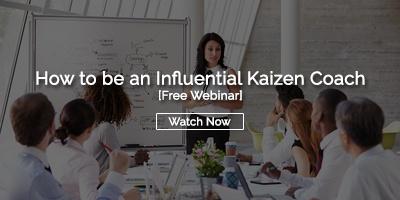 We recently had a conversation with a client who has been through a few too many failed Kaizen events. The team was unorganized, not well supported, and unable to obtain the desired results. When we dug in a bit more to try to figure out why, we learned that although there was a Charter document created for the event, it was incomplete and insufficient to serve as a guide for the team. We’re putting this post together to help this client and anyone else who might be new to Kaizen events or struggling to find success.
We recently had a conversation with a client who has been through a few too many failed Kaizen events. The team was unorganized, not well supported, and unable to obtain the desired results. When we dug in a bit more to try to figure out why, we learned that although there was a Charter document created for the event, it was incomplete and insufficient to serve as a guide for the team. We’re putting this post together to help this client and anyone else who might be new to Kaizen events or struggling to find success.
There are many ways you can layout your charter. Some organizations use templates that organize all of the information onto one page often in Excel, while others just use a simple document. The form isn’t as important as the content. It is also essential that the document is stored in your improvement management system so that it can be referenced in the future. Here are the elements it should include:
Primary Stakeholders: The key stakeholders include the facilitator for the event, the process owner, and the executive sponsor. The facilitator may be an employee or a consultant hired to oversee the event.
Team Members: Be sure to list everyone who will be actively engaged in the event. The team should always include the people who do the work in the targeted process. It may also include subject matter experts and internal customers of the process. It is often helpful to include the contact information for each team member in the charter, so it is easily accessible.
Project Scope: This is where you define the target process and the start and end points. You’ll also want to list any parts of the process or adjacent processes that are outside of the boundaries for this event. Finally, you’ll indicate the Key Performance Indicators impacted by this project.
Schedule: Your Kaizen event charter should include the duration of the event, usually between three and five days. You’ll lest the start date and the end date, along with the number of hours that will be spent on the Kaizen each day and the start time. It is also a good idea to include the date that you will report results back to the executive sponsor and other stakeholders. You might also add the meeting location in this section of the document.
Problem Summary: Now you get into the heart of the charter by documenting the reason for the Kaizen event. It doesn’t have to be a novel, but it should be specific enough to help keep the team focused and make it clear to the rest of the organization why this work is necessary and being given the resources that a rapid improvement event demands.
Improvement Category: For reporting purposes, it is a good idea to assign an improvement category to your event. That will allow leaders to access what types of issues are being addressed throughout the entire organization. While your improvement categories might differ, examples include quality, cost, delivery, efficiency, waste, safety, energy, customer satisfaction, and moral.
Measurable Objective: Here you will define success for your event. What will be measured to demonstrate that improvement did in fact occur? It is vital that the measurable objective is aligned with the organization’s strategic goals hopefully deployed through Hoshin Kanri or another formalized method. The baseline for each metric that you choose should be identified, along with the target end result.
Resources Needed: Identify all resources that will be needed for the event including materials, equipment, people, budget, and training. Along with each resource, list the date it will be required.
Possible Obstacles: It is smart to think in advance about what challenges may arise. This gives the team time to think about how to overcome them before the Kaizen event kicks off. Possible obstacles include budget constraints, people who aren’t available, inaccessible workspaces, and so forth.
Key Deliverables: In addition to the success metrics we described above, include any other deliverables that will be expected. This includes documentation of the event in your innovation management solution, any reports that will be produced, and potentially a presentation of the results.
Daily Milestones: For each day of the event, list what you expect the team’s achievement to be. For example, the Day 1 milestone might be a map of the current state of the process. Day 2 might be devoted to root cause analysis or defining the desired future state.
Review Plan: After the Kaizen event is concluded, it is vital to continue to review the objectives to make sure that the improvement is maintained over the long run. The Kaizen event charter should include the cadence for future review.
With this structure in place, you put your team in the best position to have a productive and ultimately successful Kaizen event. If there are other items that you include in your Kaizen event charter, we’d love to hear about it. Just drop us a note in the comments.



Add a Comment